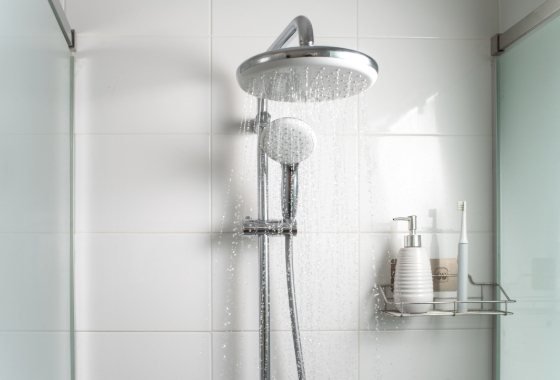How to save electricity and water with showerheads and faucets
Save water, save money. You can cut down on water use – and the electricity costs for heating that water – by making a few fixes in your bathroom and kitchen.
On this page:
- Energy-efficient showerheads
- Energy-efficient faucet aerators
- Discounts for showerheads and aerators
- Fix leaky faucets
Energy-efficient showerheads
Low-flow, energy-efficient showerheads will help cut down on the amount of water you use, without sacrificing water pressure or your shower time.
How to install a low-flow showerhead
In many cases, showers can be the largest single contributor to overall hot water use in a home, accounting for 15% of total household energy use.
Replacing a conventional showerhead with a high-efficiency model is as inexpensive as $15 and is usually a quick and simple job. The payback for installing low-flow showerheads is almost immediate, depending on the frequency of showers.
Energy-efficient tap aerators
Low-flow faucet aerators help you cut down on water usage which will cut down on your electricity costs.
How to install tap aerators
Installing a high-efficiency aerator on your kitchen sink could save you $28 per year in hot water costs.
Supplies
- Kitchen or bathroom faucet aerator
- Thread-seal tape
Steps
- Unscrew your old aerator in a counter-clockwise direction.
- If the grooves on your tap are on the inside, then place rubber washers into the top of the aerator.
- If the grooves on your tap are on the outside, use a thin washer.
- Gently screw on the new aerator to the faucet and be careful not to cross the threads.
- Tighten the aerator by hand.
| Product | Discount available |
|---|---|
| Low-flow showerhead | Discounts offered seasonally. Check back later in the fall. |
| Faucet aerator | Discounts offered seasonally. Check back later in the fall. |
Fix leaky faucets
A leaky faucet can waste up to 11,350 litres of water each year. Fixing a leaky hot water faucet can save you up to $33 per year in water heating costs.
Worn-out washers are the main cause of leaks in faucets, and a new one generally costs about 25 cents. Here's a step-by-step guide to fixing a leaky compression faucet with handles for hot and cold:
Supplies
- Towels
- Screwdriver
- Scouring pad
- Wrench
- Gasket
- Plumber's putty
Steps
- Turn off the water. If you look under your sink, there will be a handle you can use to shut off the water flow.
- Plug the sink with a cloth, or towel to stop small parts from going down the drain.
- There's likely a decorative piece on the handle, sometimes labelled hot or cold. You'll need to remove this to expose a screw.
- Using a screwdriver, loosen the screw and remove the handle. This will expose a valve.
- Tighten the valve with a wrench and turn the water back on to see if this fixed the leak. If the faucet is still leaking, turn the water off again.
- Remove the valve completely by unscrewing it, and check the threads for corrosion and dirt, then clean with a scouring pad. You'll also want to check the bottom of the valve for a gasket. If it looks deteriorated, remove the screw and replace the entire gasket.
- Once the valve has been fixed, apply some plumber's putty along the threads to create a watertight seal.
- Put the valve back in place, replace the handle and turn the water back on to check to make sure the leak is fixed.




